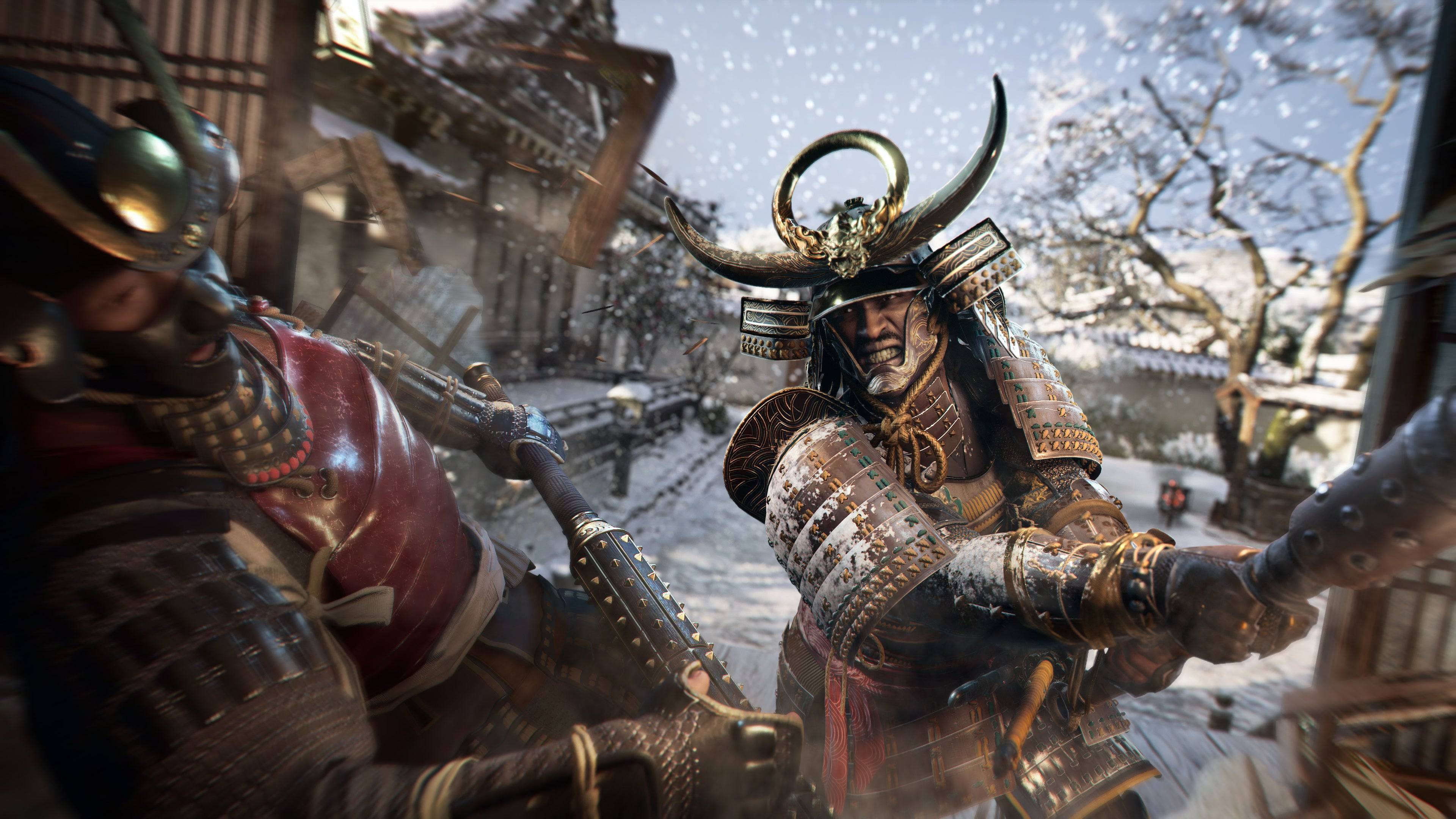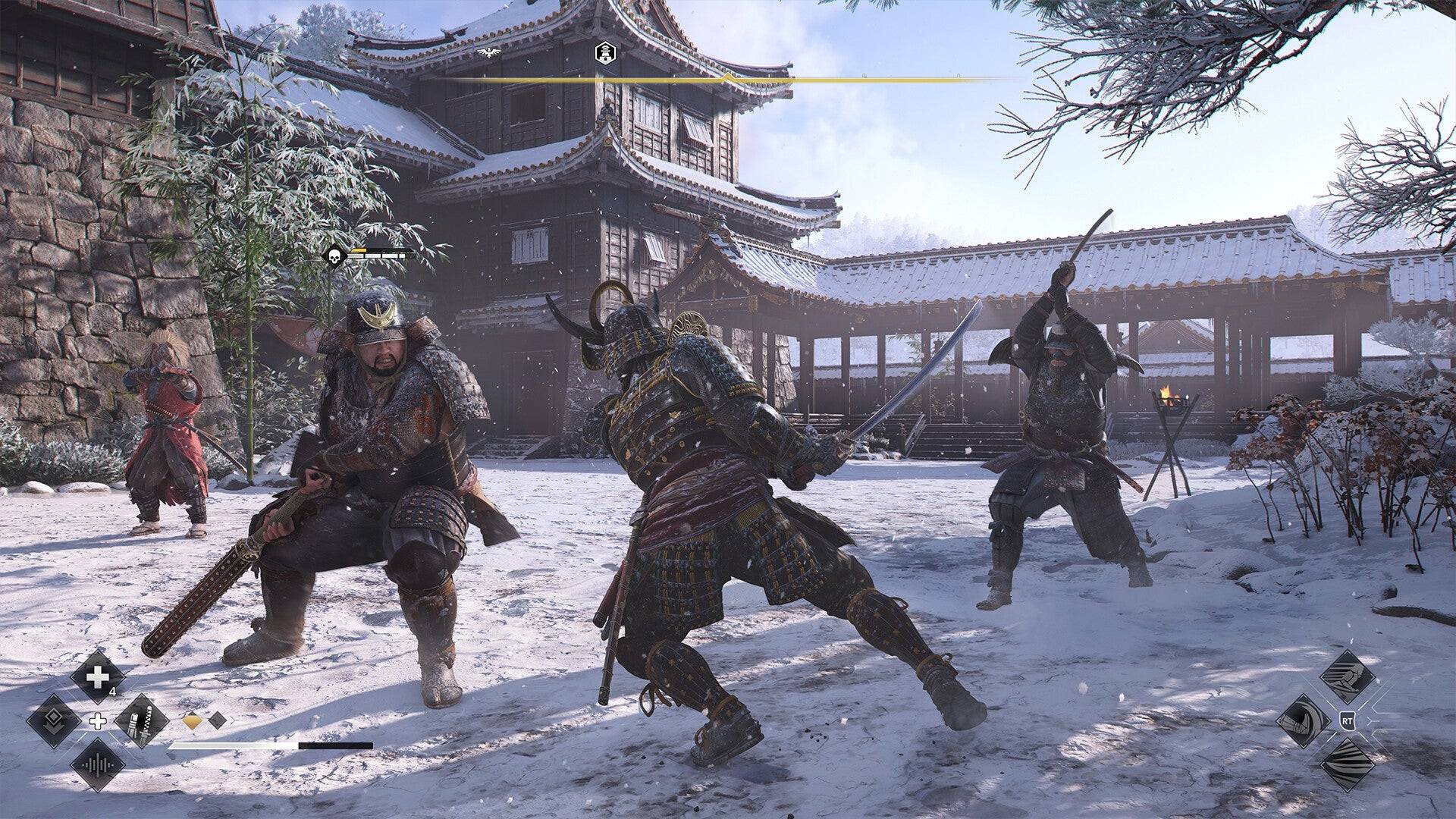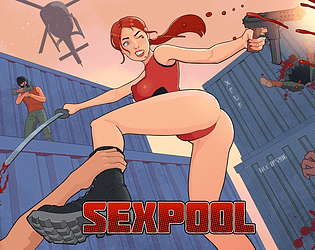Thanks to a renewed focus on the core principles that defined the *Assassin’s Creed* series from the start, *Shadows* delivers the most satisfying gameplay experience the franchise has seen in years. The game reintroduces a fluid and responsive parkour system reminiscent of *Unity*, allowing seamless movement from street level to castle rooftops. A grappling hook further enhances mobility, making it easier than ever to reach strategic vantage points. From a high perch atop a narrow beam, you’re just one Leap of Faith away from executing the perfect silent takedown—provided you're playing as Naoe, that is. Switch to Yasuke, *Shadows’* second protagonist, and the entire dynamic changes completely.
Yasuke is slow. He lacks agility. Silent elimination? Not an option. Climbing feels awkward and inefficient, almost like watching a seasoned warrior attempt ballet for the first time. He represents everything a traditional *Assassin’s Creed* protagonist isn't—yet he might be one of Ubisoft’s most intriguing design choices in recent memory. Playing as Yasuke doesn’t feel like playing *Assassin’s Creed* at all—and that may be precisely the point.
A Fresh Perspective on Stealth and Combat
At first glance, Yasuke's limitations seem counterintuitive to the series' identity. Why introduce a protagonist who struggles with climbing and can't perform stealth kills? However, the more time I spent with Yasuke, the more I began to appreciate his unconventional role. His flaws highlight long-standing issues within the franchise while offering a refreshing alternative to the usual gameplay loop.

You don’t take control of Yasuke until several hours into the campaign, after you've grown accustomed to Naoe’s nimble, stealth-focused playstyle. Transitioning to Yasuke feels jarring. As a towering samurai, he moves through enemy territory like a tank—loud, imposing, and ill-suited for silent infiltration. He can barely scale walls, struggles with balance on rooftops, and requires ladders or scaffolding to make vertical progress. This forces players to approach exploration differently, relying on environmental cues and alternate routes rather than instinctive parkour traversal.
Rethinking the Core Mechanics
The lack of access to elevated viewpoints limits Yasuke’s situational awareness. Without the ability to scout enemy patrol patterns from above, planning becomes more reactive. Unlike Naoe, who benefits from a refined version of Eagle Vision, Yasuke has no such tool. What he does have is raw power and a combat system that stands out as the best *Assassin’s Creed* has seen in over a decade.
Yasuke’s combat style is brutal, deliberate, and deeply satisfying. Each strike carries weight, and his skill tree unlocks a variety of powerful techniques—from devastating rush attacks to cinematic ripostes. His signature move, the “Brutal Assassination,” involves impaling an enemy on his blade, lifting them off the ground, and roaring triumphantly—not exactly subtle, but undeniably thrilling. In contrast to Naoe’s graceful stealth, Yasuke turns every encounter into a high-stakes brawl.
Two Protagonists, Two Distinct Experiences
By splitting the narrative between two protagonists with opposing mechanics, *Shadows* successfully separates stealth and combat into distinct experiences. Naoe remains fragile, requiring careful positioning and retreat after engagements, reinforcing the classic *Assassin’s Creed* loop. Yasuke, on the other hand, thrives in direct conflict, offering a gameplay style closer to *Ghost of Tsushima* than anything else in the franchise.
While this dual-system creates a compelling contrast, it also exposes a fundamental tension: Yasuke doesn’t align with the series' foundational ideals. *Assassin’s Creed* has always celebrated verticality and stealthy takedowns. Yasuke rejects both, introducing friction where there was once fluidity. Yet, despite his mechanical shortcomings, he brings something new to the table—a fresh perspective that challenges expectations and encourages experimentation.
Naoe: The Return of the Classic Assassin
Naoe embodies what many fans have been longing for: a return to agile, stealth-driven gameplay. Her toolkit includes enhanced parkour, precise takedowns, and the ability to traverse Japan’s intricate architecture with ease. While *Shadows* removes the "stick-to-every-surface" mechanic of past titles, it introduces a more realistic yet still flexible climbing system. Combined with the Sengoku Period setting, these changes breathe new life into the classic *Assassin’s Creed* sandbox formula.
Even in direct combat, Naoe holds her own thanks to the same refined swordplay mechanics available to Yasuke. The difference lies in endurance—Naoe must rely on evasion and repositioning, keeping encounters tense and fast-paced. For players seeking the traditional *Assassin’s Creed* experience, Naoe is the natural choice.
Final Thoughts: Which Character Will You Choose?
Ultimately, the decision comes down to preference. Do you favor the elegant precision of Naoe’s stealth-based gameplay, or are you drawn to the raw intensity of Yasuke’s combat prowess? Ubisoft’s bold experiment results in a unique dual-protagonist structure that expands the boundaries of the franchise—but not without compromise.

While Yasuke may never fully align with the spirit of *Assassin’s Creed*, his presence adds depth and diversity to the gameplay experience. He offers a different lens through which to view the world—one rooted in strength, confrontation, and spectacle. And for that reason, he remains a fascinating addition to the series.

















